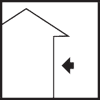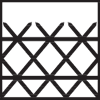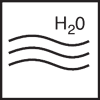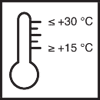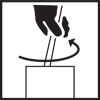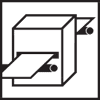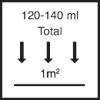Article No. 348805
Water-based primer with protection against soft rot and blue stain

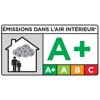
Hazard warnings
- Use biocides safely. Always read the label and product information before using!
Product specifications
The stated values represent typical product characteristics and are not to be construed as binding product specifications.
Field of application
- Exterior wood with no ground contact
- Soft and hard woods
- Dimensionally stable wood building elements: e.g. windows and doors
- Wood building elements with limited dimensional stability, e.g. folding shutters, matchboarding, summerhouses
- Wood building elements with no dimensional stability: e.g. fences, framework, carports, planking
Properties
- Ready to apply by dipping or flow-coating
- Excellent flow characteristics on untreated wood
- Good pore wetting performance
- Outstanding (wet) adhesion
- Protects against blue stain and soft rot
- Free from propiconazole
-
Preparation
-
Substrate requirements
The substrate must be clean, dry, free of dust, grease and loose substances, and prepared in the correct manner.
Dimensionally stable wood building elements: wood moisture content 11-15%
Wood building elements with limited or no dimensional stability: wood moisture content max. 18%
-
-
Application
-
Stir well, including during application or after a break in work.
Qualified specialist companies: brushing, dipping, flow-coating and spraying in closed systems only.
Once dry, apply further coatings.
Seal opened containers well and use contents as soon as possible.
-
Application instructions
-
Check colour, adhesion and compatibility with the substrate by setting up a trial area.
Before coating technically modified woods and wood-based materials, apply the product to a trial surface and conduct a suitability test on the desired area of use.
Substances in oak may bleed, causing dark discolouration, when coated with water dilutable dispersion stains.
Apply forced drying to tannin-containing woods.
The best flow results on Accoya, oak and chestnut are achieved at a pH value of 9.0–9.5, corresponding to an additive content of 0.3–0.5% VP 20829 Additive (0366).
If the viscosity increases due to evaporation, this must be compensated for using water (target viscosity: clear, special colours, lignin-stabilising: runout time approx. 23 - 27 s in ISO cup 3 mm; white: runout time approx. 34 - 45 s in ISO cup 3 mm)
Dilute with up to 10% water to improve flow properties in unfavourable conditions (elevated temperatures, low humidity). Add water to make up for any moisture lost through evaporation.
If foaming occurs in the flow coating system, it is recommended to add 0.2-1.0% VP 9325 defoaming agent - strength 2.
The system finder on our website www.remmers.com contains coating recommendations for specific wood types to be used when treating windows and exterior doors.
-
Drying
Can be overcoated: after approx. 4 hours
(at 23 °C and 50% RH)
If forced drying is used, can be overcoated: after approx. 90 minutes
(20 minutes dripping/50 minutes drying phase (35 – 40 °C)/20 minutes cooling phase)Low temperatures, poor ventilation and high humidity delay drying.
-
Thinning
Ready to use
-
Working tools / cleaning
-
Brush, dipping tank, flow coating facility, spray coating facility, vacuum machine
-
Clean tools with water or Aqua RK-898 Cleaning Concentrate immediately after use.
Ensure that any residue from cleaning is disposed of correctly.
-
Storage / shelf life
-
Store in well-sealed, original containers, out of the reach of children and in a dry, cool, well-ventilated room which is protected from direct sunlight and frost. No smoking is permitted in storage areas.
-
Usage
-
120 - 140 ml/m²
-
General information
-
According to the current state of the art (this includes DIN 68800-1 and -3 in Germany), wood preservation measures must also be planned for non-load-bearing wooden elements in good time and with due care, with the agreement of all parties involved in the construction (architect, developer, builder) and in compliance with the legal requirements and the conditions on site. The use of biocidal (“chemical”) wood preservatives should therefore always be indicated in suitable fashion prior to sale, or must be agreed in advance with the client in writing. Failure to comply with this requirement may result in country-specific or contract-specific conflicts with legal requirements, standards or certification systems. The Remmers Technical Service would be happy to discuss the matter and provide you with a template agreement for the use of a biocidal (“chemical”) wood preservative on the wooden elements being used.
Observe the information sheets “Upkeep and Maintenance of Dipping Tanks and Flow Coating Facilities” and “Information on Workplace Hygiene”.
-
-
Disposal instructions
-
Larger quantities of leftover product should be disposed of in the original containers in accordance with the applicable regulations. Completely empty, clean containers should be recycled. Do not dispose of together with household waste. Do not allow to enter the sewage system. Do not empty into drains.
European waste code 03 02 02* organochlorinated wood preservatives
-
-
Safety / regulations
-
For further information on the safety aspects of transporting, storing and handling the product and on disposal and environmental matters, please see the current Safety Data Sheet.
-


















